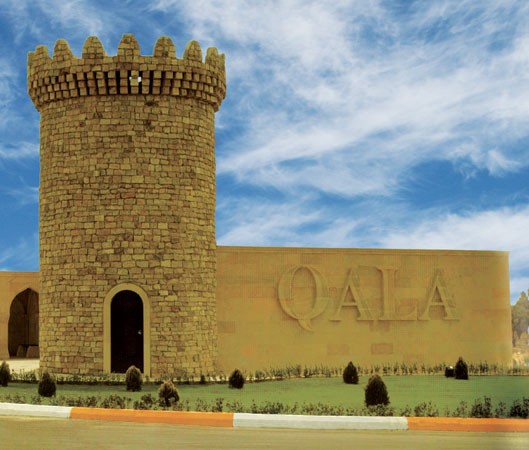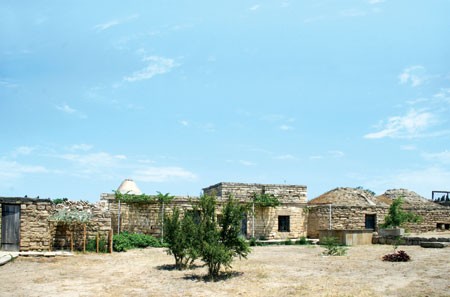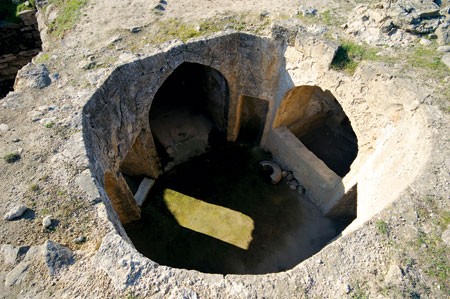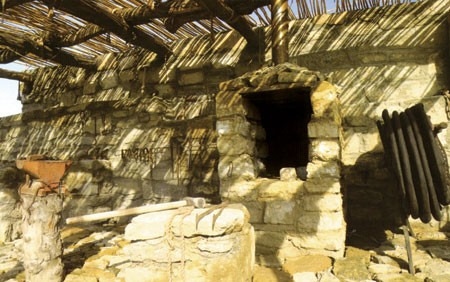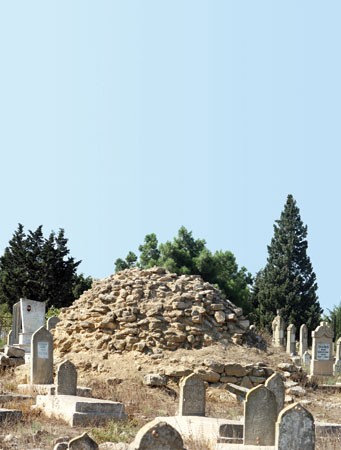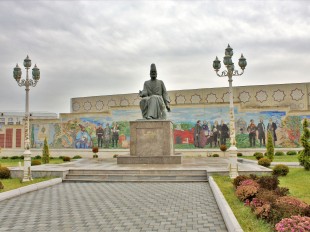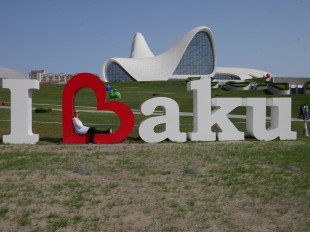There used to be four mehella-quarters in the village, called Balaverdi, Hadji Ramazan, Chemberekend and Terekeme. Each quarter had a central mosque, a square in front of the mosque and streets radiating out from the square; this is even indicated in the name of one of the quarters - Chemberekend-Obruch – (Chemberekend-Ring – ed.) in which the system of building a quarter with circular and radial streets, and its enclosure, transformed the quarter into a fortress.
Bronze Age beginnings
Archaeological excavations conducted in the village and nearby have shown that Qala has been populated since the 3rd millennium BC. Finds of pottery and work tools tell us something about the permanence and power of the old settlement. These finds and the rock carvings that have been discovered in the village, support the theory that the majority of classical villages around Baku were built on older primeval sites. It should be mentioned that it is actually incorrect to call Qala a village or settlement; it was, rather, a small town. This is confirmed by evidence of urban civilisation, such as water pipes and drainage, and craft/commercial activities, both within the population and in the archaeological remains.It is a historical paradox that although Qala has existed and developed for centuries close to Baku during the latter’s development from medieval town to capital city, a visitor to the village is shrouded in the atmosphere of olden times. Local people have managed to maintain their connection with times past, which may have been patriarchal, but which also offered interesting lives and human relationships. Just look their existing achievements. The Archaeological and Ethnographic Museum complex was created in the village in summer 2008. This was completed on the personal initiative of the President of the Heydar Aliyev Foundation, 1st lady of Azerbaijan, Mrs.Mehriban Aliyeva.
Two ideas stood at the heart of the museum’s conception: firstly, to demonstrate within a relatively compact area the history, architecture and ethnography of the Absheron, and secondly, to create an interactive tourist attraction.
Materials belonging to periods from the early Bronze Age (the 3rd millennium BC), to the ancient, the medieval, and right up to the 19th century, were assembled in the Museum Complex. They include rock carvings, primeval settlements, ancient dwellings, tools, ornaments, kurgans, instruments and primitive working implements, as well as a medieval room, grave stones, pottery, carpets etc.
Pictures of life and legend
The rock carvings express the ideology of primitive humans and are certainly fascinating. For example, a number of stones with rock carvings called Absheron’s Kama Sutra take pride of place. Scenes of sacred intimate relations devoted to the female goddess of abundance, fertility, mother-earth etc. are graphically illustrated. Archaeologists have concluded that these stones reflect, even illustrate, an ancient Sumerian legend about the goddess Inanna, about her love and adventures. Archaeological finds have long since informed us of Absheron’s contacts with ancient civilizations; the petroglyphs raise these ties to a much higher level. A unity in their perceptions of the world and the similarities between religious and mythological ideas are identified here.The story is also told of the great advances made by ancient human society on Absheron. A carpet loom, pottery, bakery and smithy have all been constructed here as working exhibits. Visitors can try their hands in these workshops, and look after camels and Gala’s breed of sheep. In other words, it is possible to live a day in the life of a medieval Azerbaijani peasant. Although some may think this life was a modest one and nothing out of the ordinary, in fact there was magic, legend and memory of the ancestors.
We should focus on the singularity of Absheron and all that is connected with this peninsula and, primarily, to Gala. This small village is actually overflowing with sanctuaries and shrines. Although many of these holy sites have Muslim names today, the ceremonies conducted inside them tell of their more ancient, pagan origins. In some cases Muslim mosques are constructed on sites sacred to previous religions, or developed from earlier monuments. There are strong impressions of Christianity or Zoroastrianism in some of them.
It may be that the special power of this place - its cosmic connections - attracted the ancients to these inhospitable environments. The famous roads which begin in the middle of nowhere and which don’t lead anywhere are linked with this series of religions. Archaeologists affirm that the trails were used by vehicles or carts.
I believe that the limestone tracks have a more interesting story, especially as similar roads exist in a number of other countries, for example in Malta. I would like to end by saying that Gala is a wonderful place for all who love antiquity, but that is not all. You can simply relax, away from the vanities of the city and its noise, and connect with history, nature and silence.
Literature
1.’The Ethnography of Azerbaijan’. 3 volume edition, Baku, 20072.’The Archaeology of Azerbaijan’. Baku, 2008
3.Ashurbeyli S. ‘The History of Baku’. Baku, 1964
4.Akhundov D.A. ‘The Architecture of Ancient and Early-medieval Azerbaijan’. Baku, 1986
5. Aliyev I. ‘Revelation of Absheron’. Baku
6.’The Azerbaijanis’. Baku, 1998
About the author: Fikret F. Abdullayev is a Doctor of Philosophy in Historical Sciences. He is Director of the Archaeological and Ethnographic Museum Complex in Qala.
